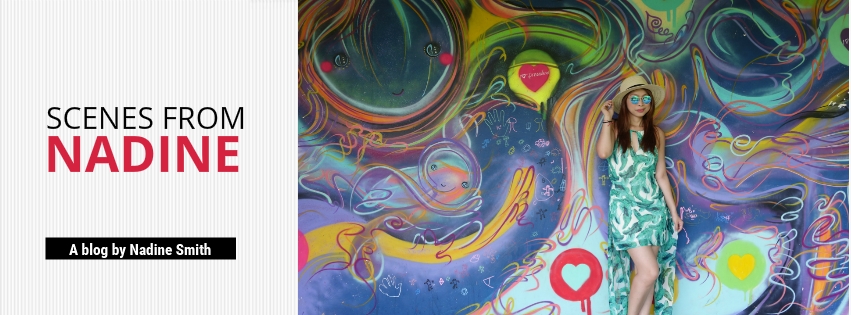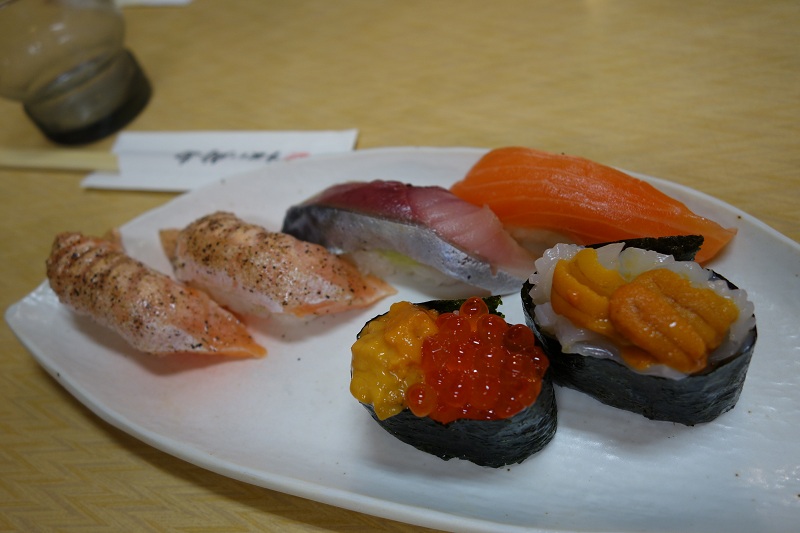More than a year has passed since my friends and I set foot on Siem Reap and marveled at its amazing culture and architecture, but the memories of this one-of-a-kind getaway are still fresh in my mind. One of the memories that never fails to put a smile on my face until now is our visit to the Bayon Temple. It is, after all, referred to by many as “the temple of the smiling faces.”
Built by King Jayavarman VII, Bayon Temple, which stands at the center of Angkor Thom, is one of the most widely known temples in Siem Reap because of the 216 gigantic faces that smile at its visitors.
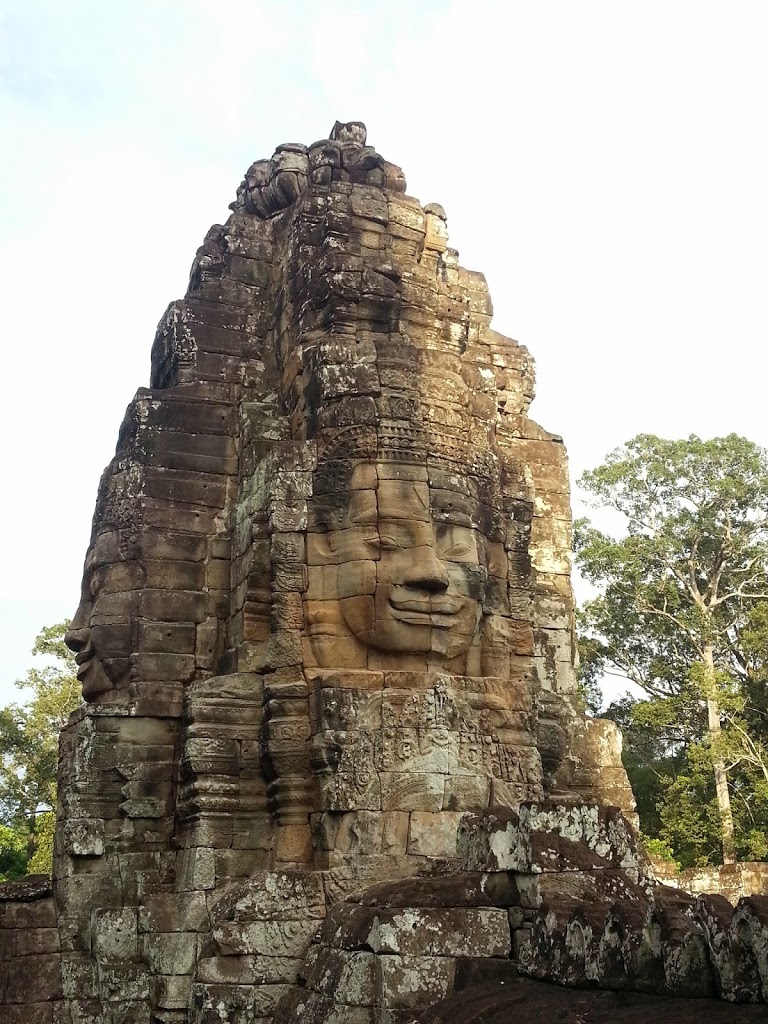
 |
| From afar, Bayon looks like an ordinary temple. But if you look closely, you will see hundreds and hundreds of human faces embellishing the towers. |
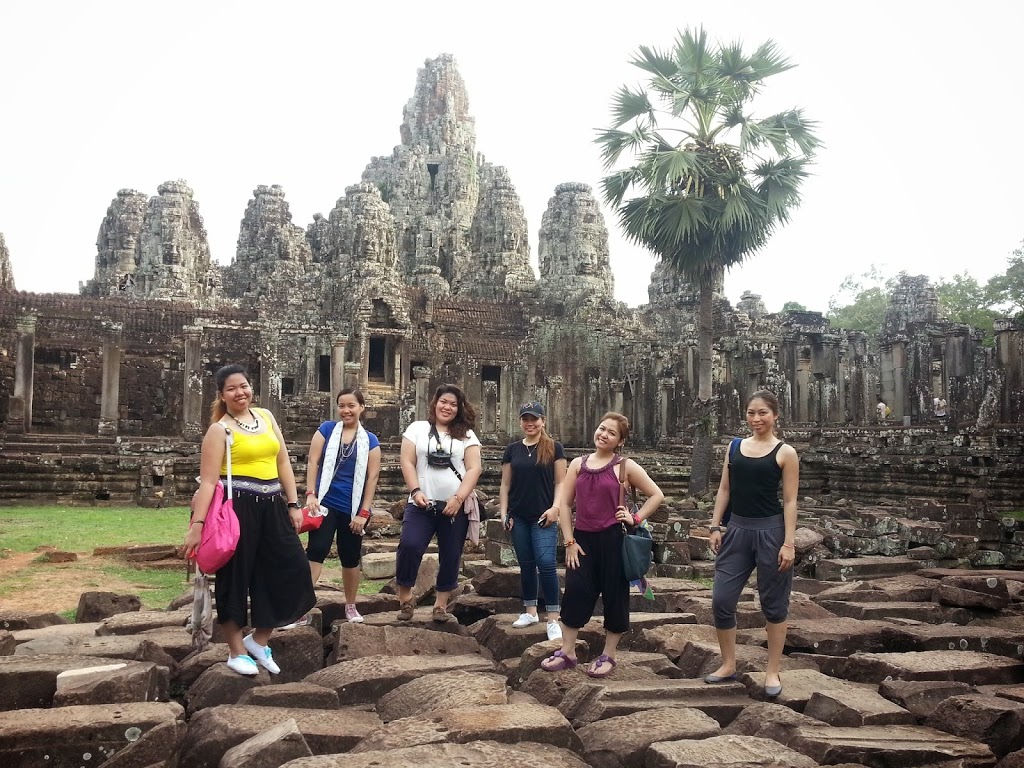
It is not confirmed who the faces on the tower belong to, but there have been suppositions that they represent King Jayavarman VII, while others say that the faces are those of Avalokitasvara (also known as Lokesvara), a bodhisattva (an enlightenment being) who embodies the compassion of all Buddhas in Mahayana Buddhism. It could also be a mix of both, since King Jayavarman regarded himself as a god-king.
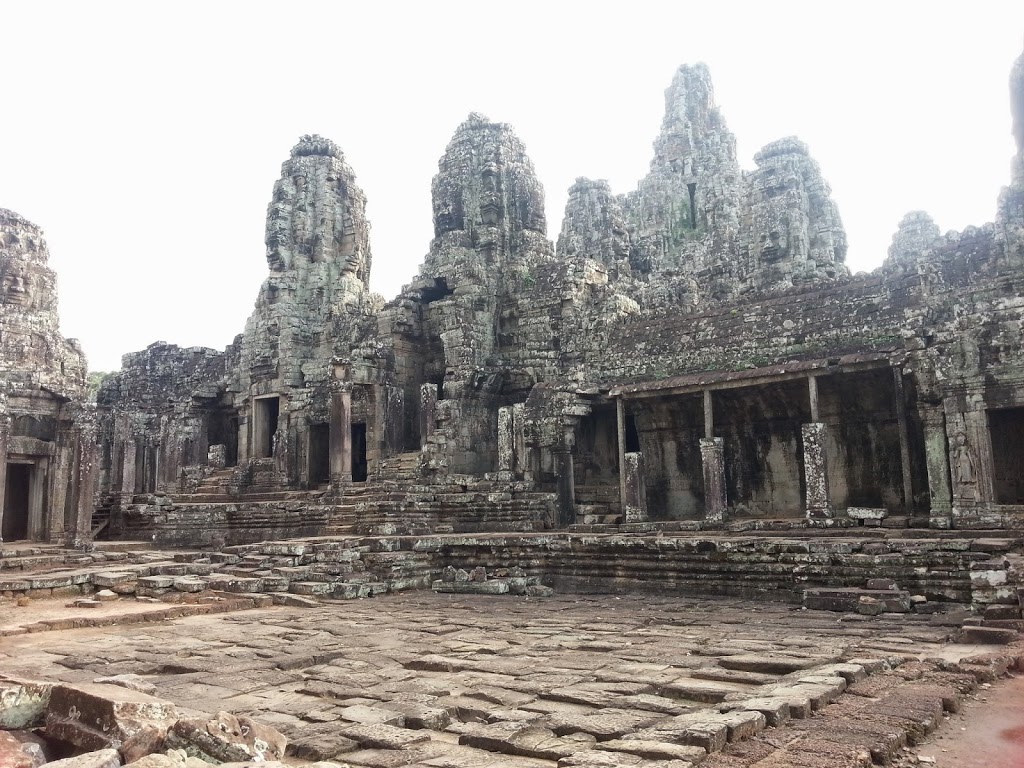

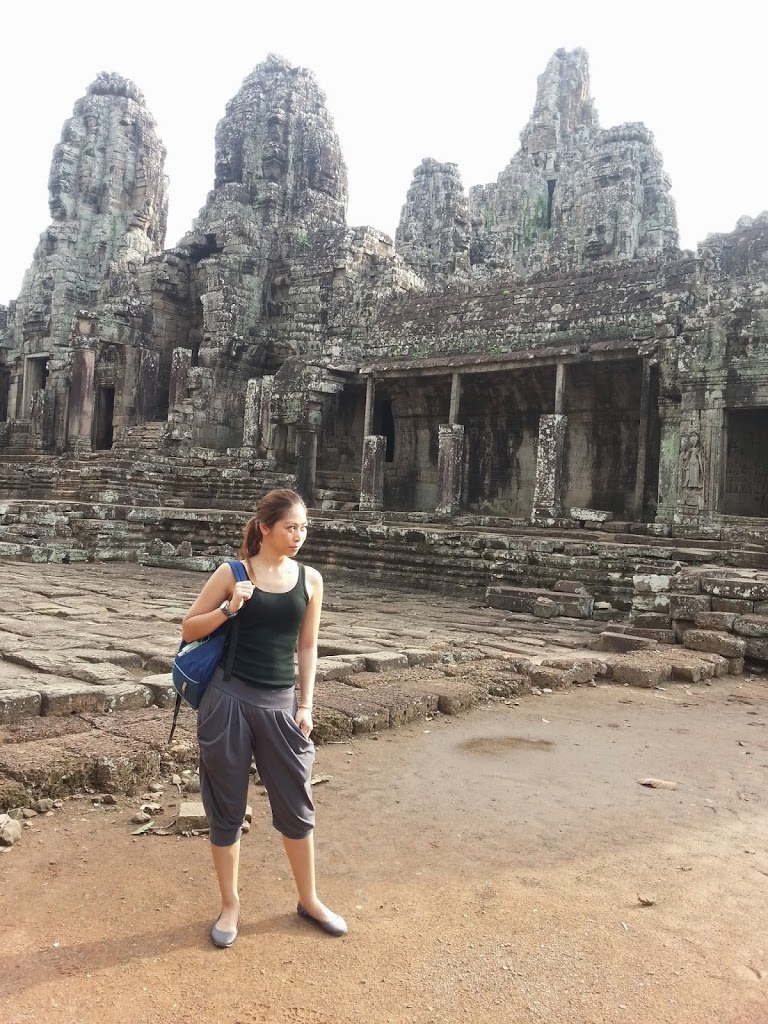 |
| Thank you, sunset, for adding more drama to this photo. |

If you were able to follow my temple-hopping chronicles from Day 1, you’ll know by now that the temples in Cambodia are always profuse with ornamented bas-relief carvings, and Bayon Temple is no exception. There are two galleries containing bas-relief artworks showing scenes from the history and daily life of Khmers, as well as various Cambodian legends.
 |
| Bas-relief carvings of the battle between the Khmers and Chams |
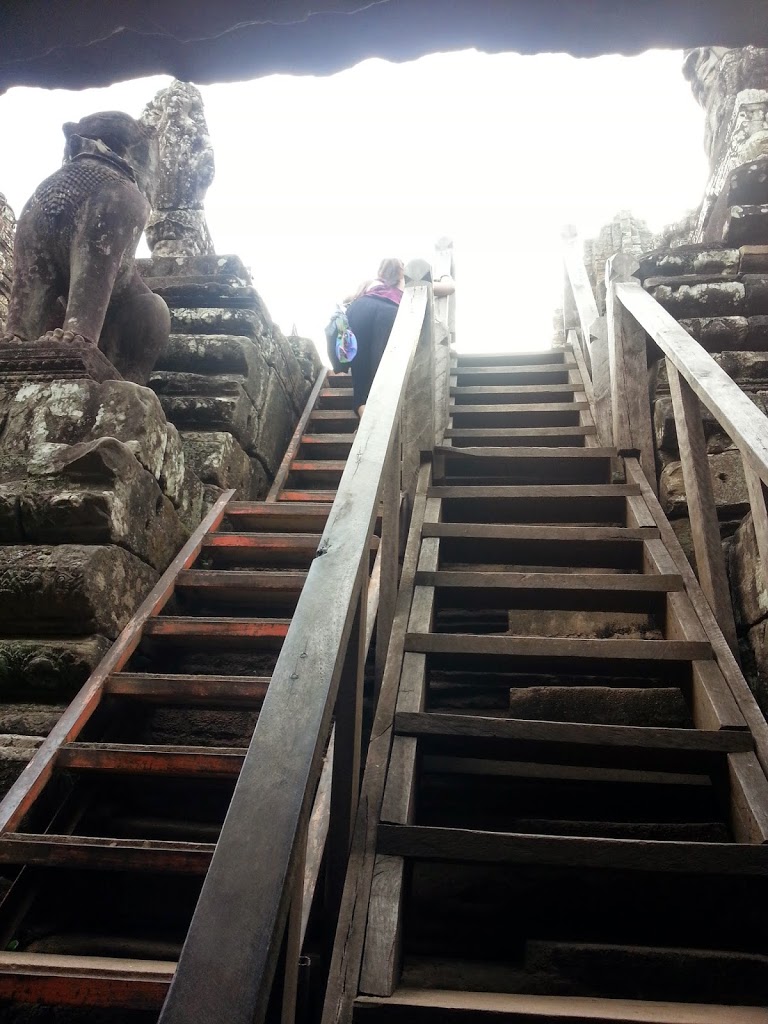 |
| Climbing to the second gallery |
 |
| There’s the French kiss, and there’s the Cambodian kiss. |
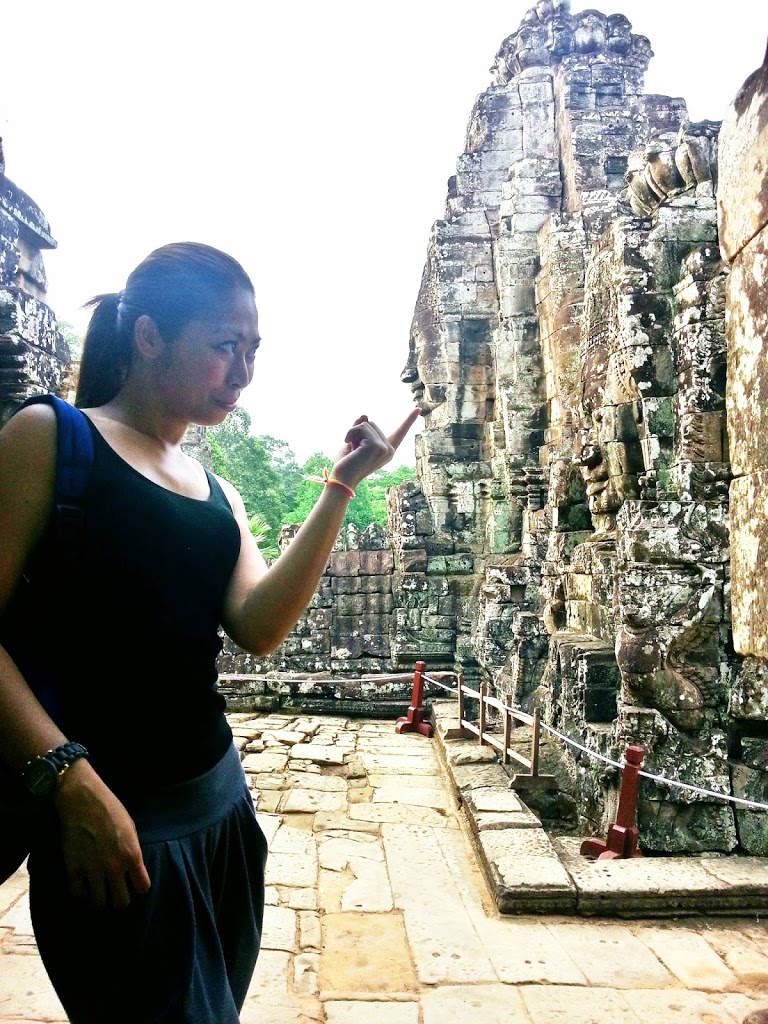 |
| Come hither, Cambodian man |
 |
| Happy to be in the midst of all this beauty |
 |
| The faces of Bayon glow as the sun’s rays burnish them |
 |
| A lambent light seeps through the hallways of Bayon |
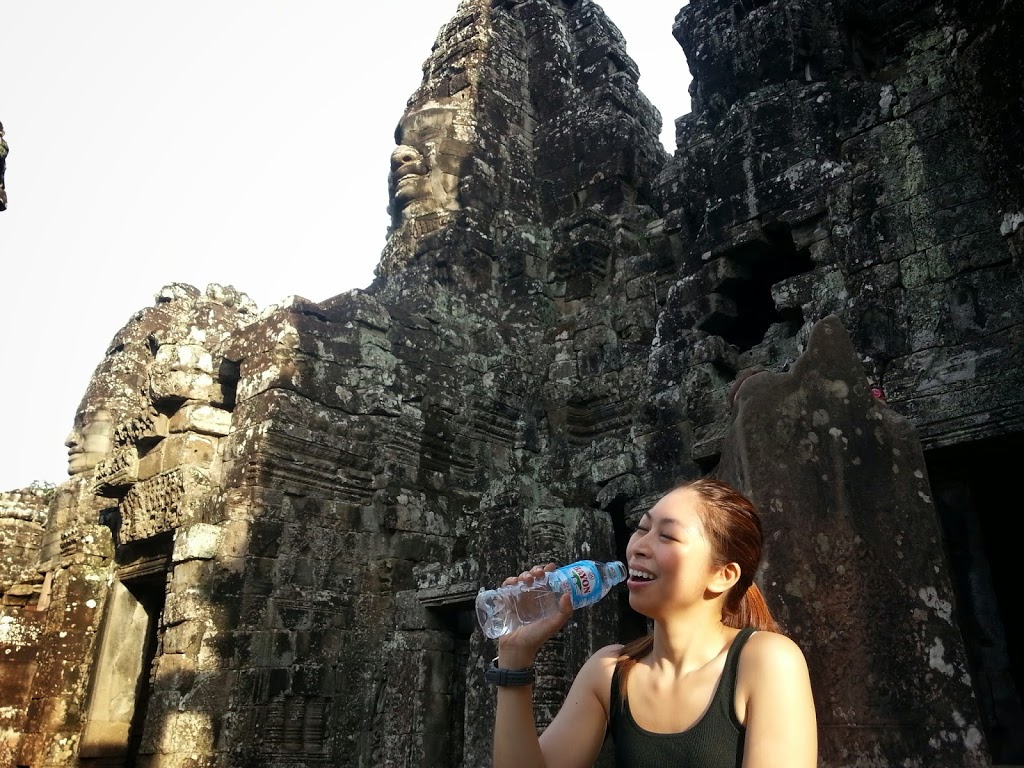 |
| When in Bayon, drink Bayon water. Haha! Yes, the bottled water is actually called “Bayon,” hence, the product endorsement. |
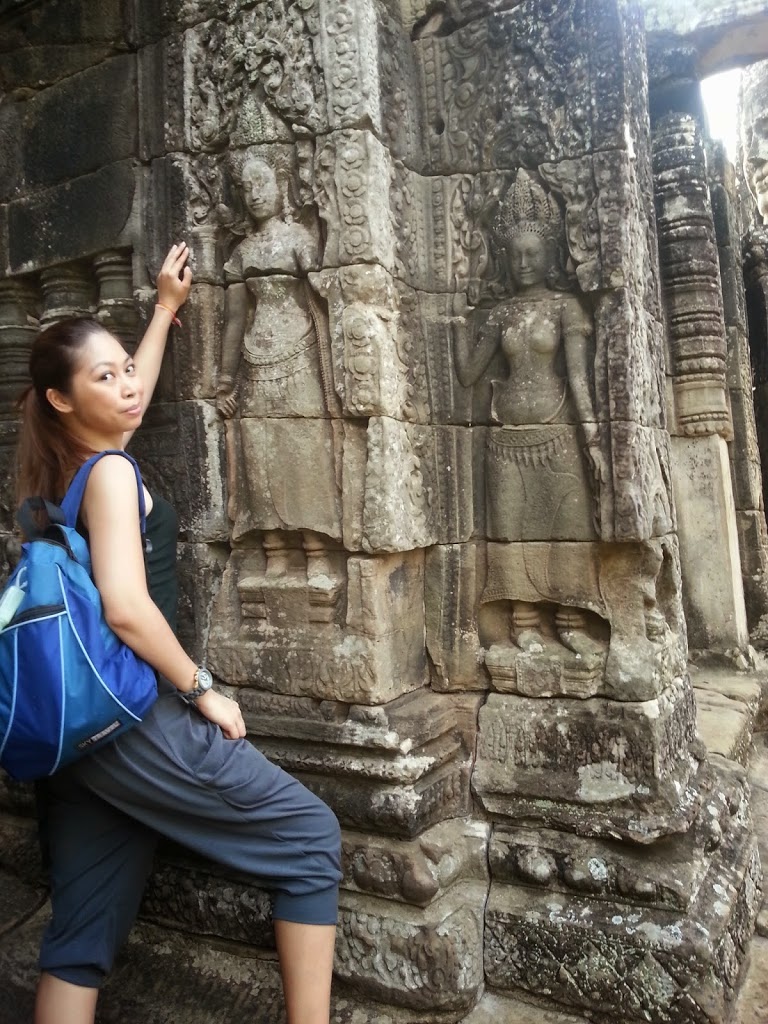 |
| Admiring the apsaras (supernatural female spirits) and devatas (female deities) on the walls |
 |
| Devatas guard the Bayon temple |
 |
| In a dark corridor, the statue of Buddha and his golden parasol are aglow |
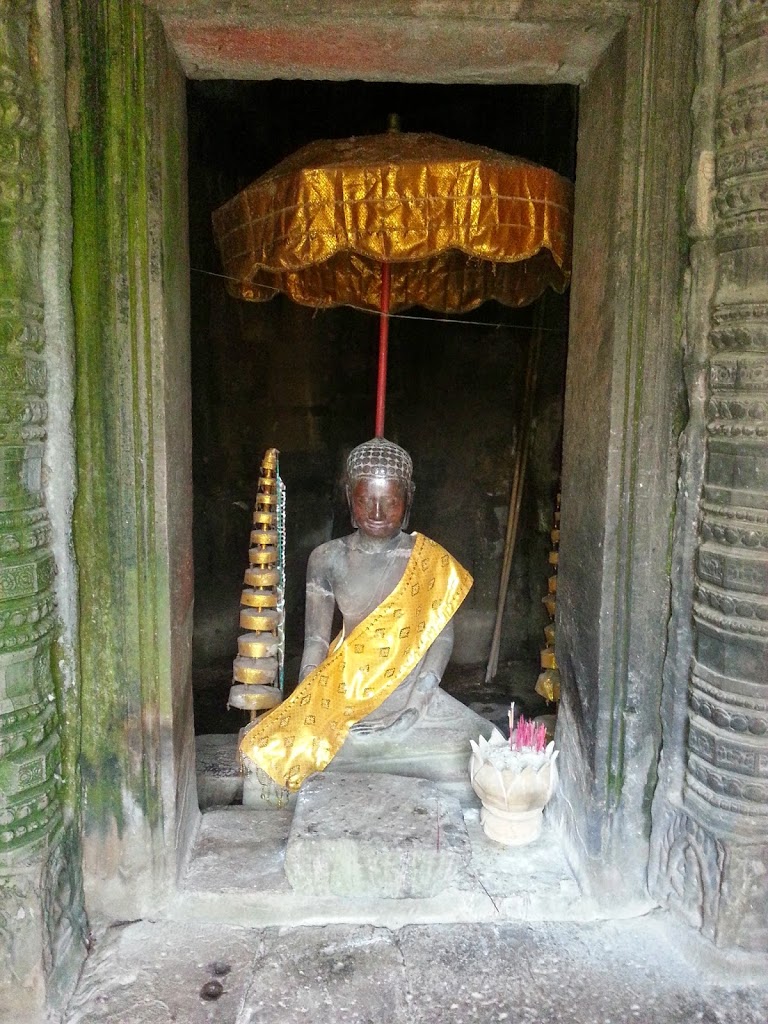 |
| The Bayon temple was built as a Mahayana Buddhist shrine, hence Buddha’s statue |
 |
| Three happy girls and one happy statue |

We found this neat little spot with a view of one of the faces in Bayon and each took our own turn in posing with it.
 |
| The yogi |
 |
| The kama sutra guru |
 |
| The tomb raider |
 |
| The apsara dancer |
 |
| The sangha (Buddhist monk or nun) |
 |
| The fertility goddess (since she’s getting married) |
 |
| The Cambodian tour guide |
Sam brought us to an area with walls decorated by bas relief carvings that showed how Bayon Temple was constructed. It was a painstaking task, achieved with the use of mostly physical force and very minimal tools. At that time, they did not even have equipment like hammers and drills, or materials like cement. It was literally the best example of manual labor.
 |
| Sam explaining the history behind the construction of Bayon Temple |
 |
| Ropes were pulled and bricks were laid all by hand |
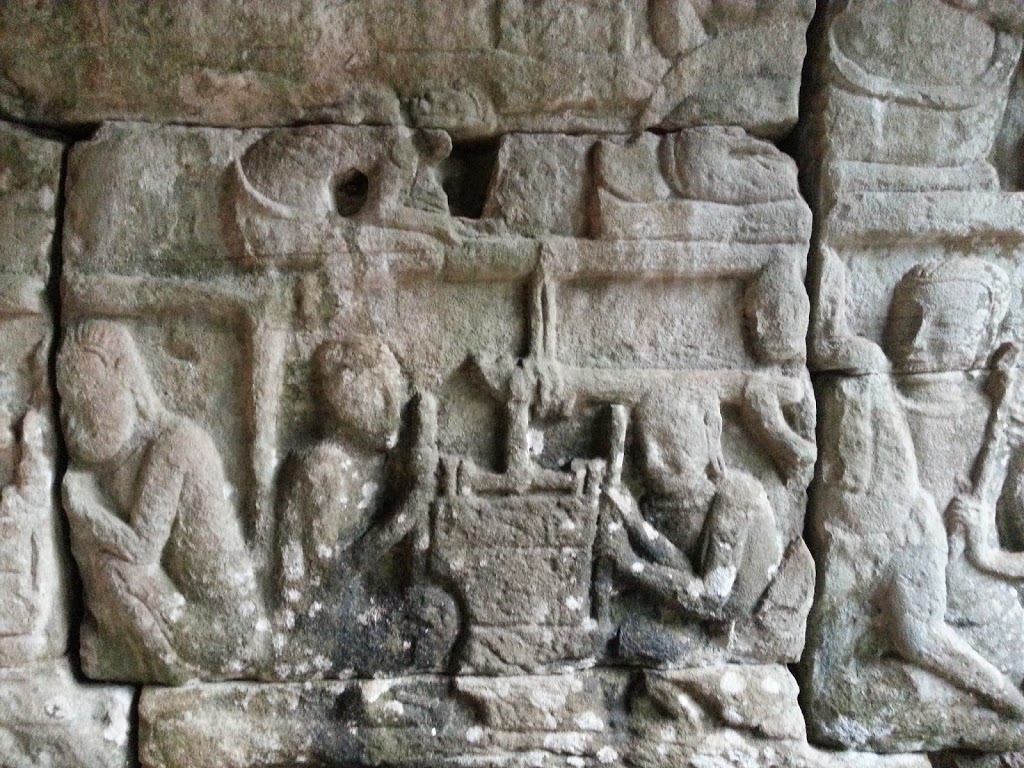
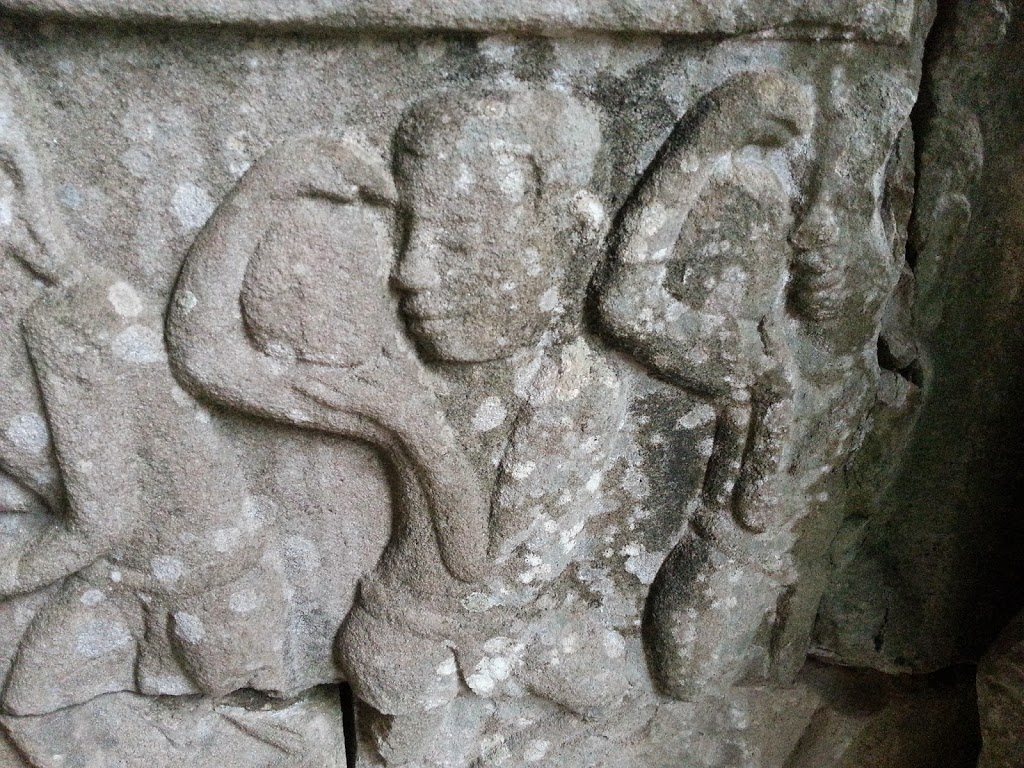 |
| This image depicts a manual laborer carrying a huge and heavy boulder on his shoulder during the time of the construction of Bayon Temple. |
 |
| Sam explained that the ground we are walking on were also assembled manually. They did not use hammer, nails, or cement to attach these stones to one another. Instead, each stone was treated like a puzzle piece, cut and molded in the most meticulous way so that they are affixed to the other stones as precisely as possible. |
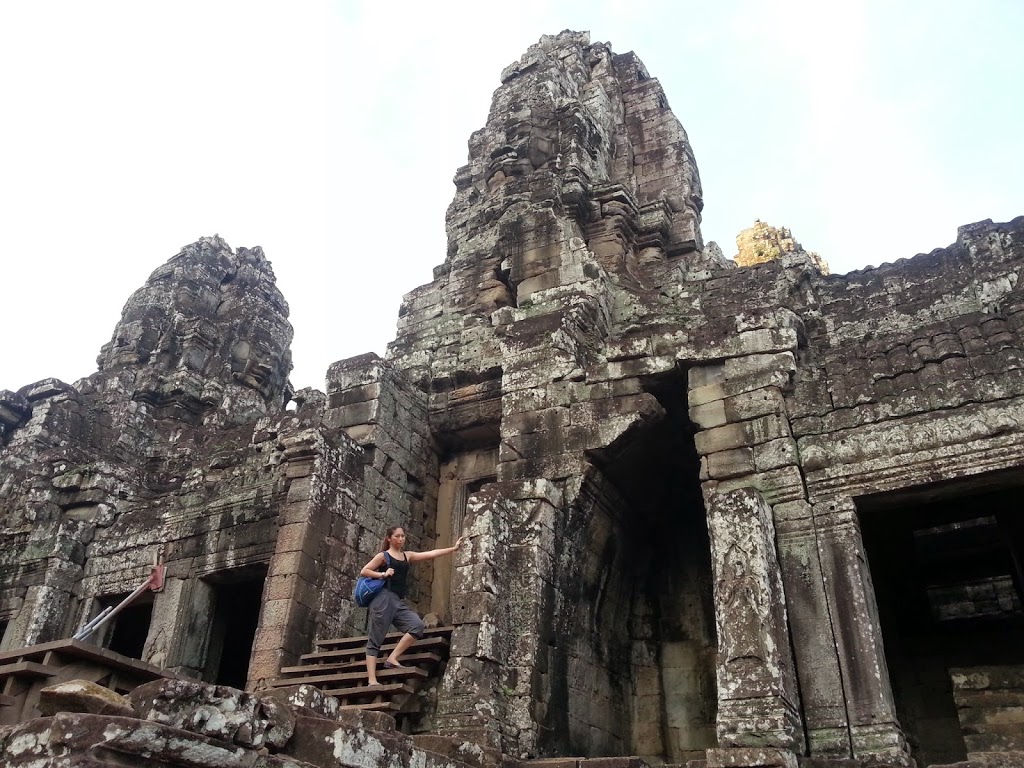 |
| Bayon Temple, you are breathtaking! |

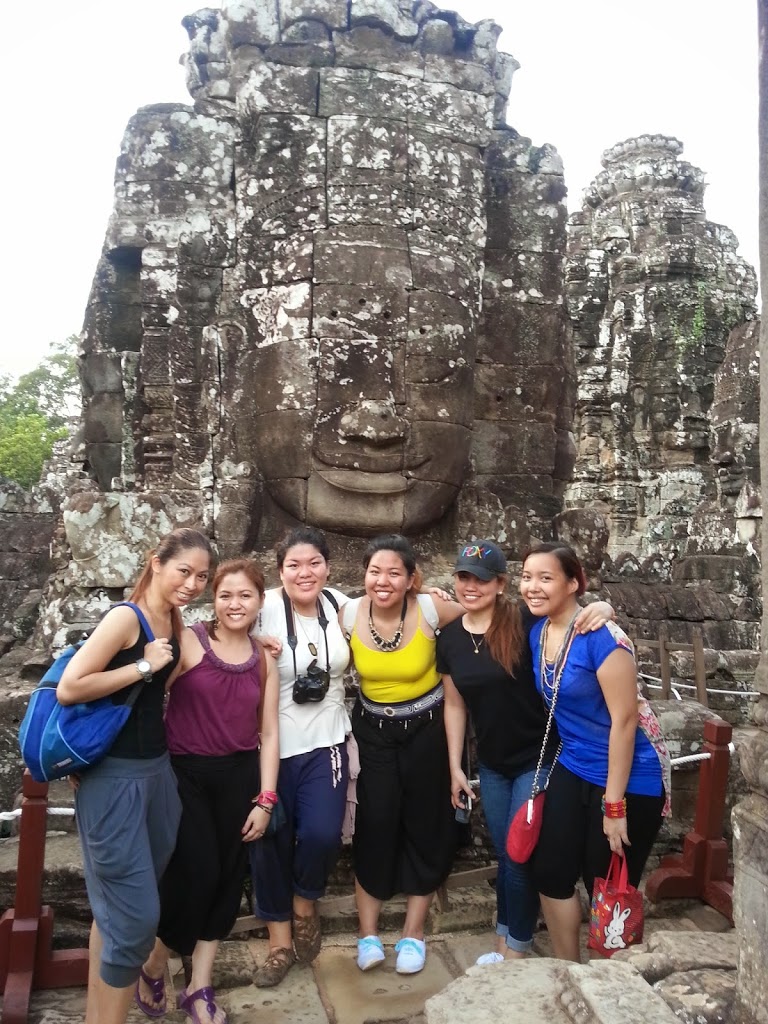
Though all of the temples we visited in Cambodia blew us away, there was something incredibly unique about Bayon Temple. It definitely stood out in the sea of Siem Reap’s superstructures. There was really something quirky about the hundreds of stone faces watching over those who sojourn in Bayon, and yet seeing the serene smiles on their faces was also quite calming. Bayon Temple is, hands down, one of the most sublime temples in Siem Reap, and I feel extremely blessed that I was able to come face to face with this beautiful temple of beaming faces.

Related


























